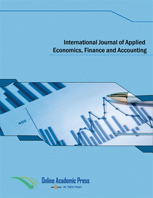The impact of fintech on the profitability of Chinese commercial banks
DOI:
https://doi.org/10.33094/ijaefa.v20i2.1930Keywords:
Banking, Fintech, Profitability, SYS-GMM.Abstract
This study assesses the transformative impact of financial technology (fintech) on the profitability of Chinese commercial banks, with a focus on addressing the challenge of endogeneity in financial data analysis. The study uses the systematic generalized method of moments (GMM) to compare the results with those from fixed-effects models in order to make the findings more reliable. The results reveal that fintech significantly impacts bank profitability, predominantly in a negative manner. This underscores the pressing need for banks to adapt and innovate, responding proactively to the fintech disruption. The practical implications of this study suggest that banks should not only invest in research and development within fintech but also tailor strategic responses according to bank types and establish a comprehensive financial services ecosystem to bolster their competitive edge and profitability. The findings are critical for bank executives and policymakers aiming to navigate the challenges posed by fintech innovations.
Downloads
Published
Issue
Section

This work is licensed under a Creative Commons Attribution-NonCommercial 4.0 International License.




